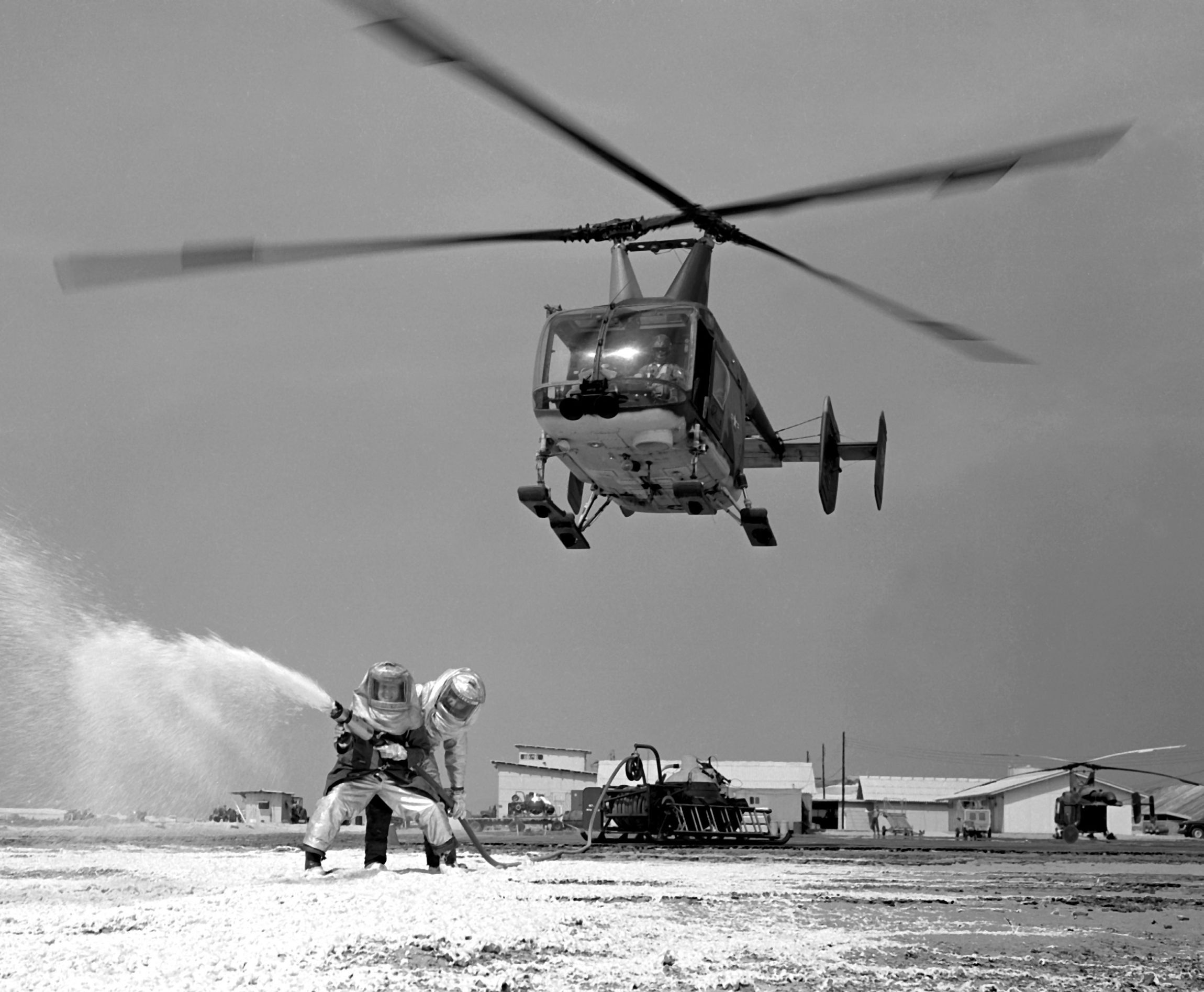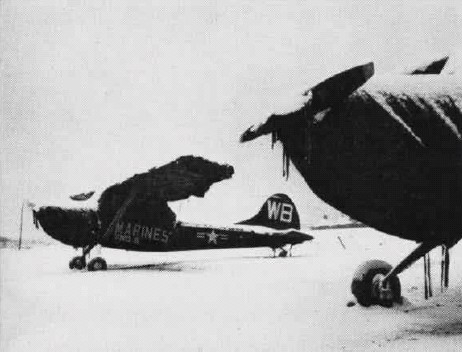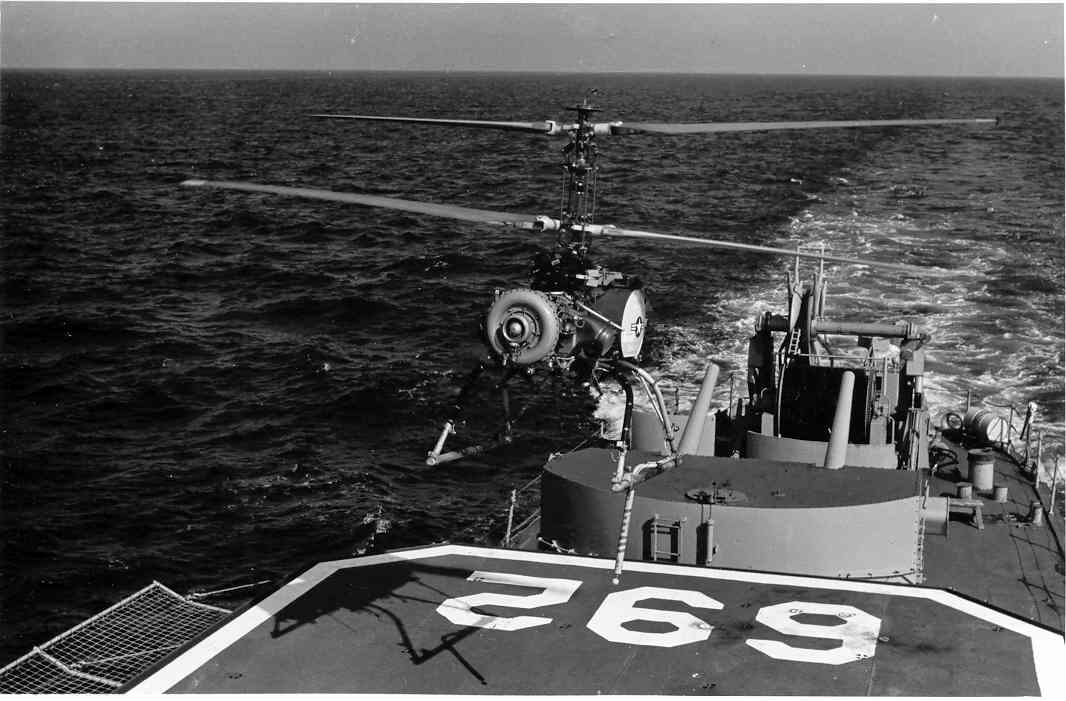|
Boeing T50
The Boeing T50 (company designation Model 502) was a small turboshaft engine produced by Boeing. Based on Boeing's earlier Model 500 gas generator, the T50's main application was in the QH-50 DASH helicopter drone of the 1950s. An up-rated version designated Model 550 was developed to power the QH-50D and was given the military designation T50-BO-12. Variants ;T50-BO-1: ;T50-BO-2: ;T50-BO-4: at 6,000 output rpm, military rating turboprop. ;T50-BO-6: ;T50-BO-8: at 5,950 output rpm, revised reduction gear ratio, fuelsystem and other changes. ;T50-BO-8A: ;T50-BO-10: at 6,000 output rpm ;T50-BO-12: ;502-1-1:Auiliary power unit ;502-2E:Turboprop, at 2,900 output rpm max. continuous at sea level. ;502-7B:Compressed air generator. ;502-8A:Turboshaft. ;502-8B:Turboprop, at 37,500 compressor rpm for take-off. ;502-10B:Turboprop, at 37,500 compressor rpm for take-off. ;502-10C:Turboshaft power unit / gas producer ;502-10F: ;502-10V: (T50-BO-4) ;502-10VB: at 3,000 output rpm, variant of ... [...More Info...] [...Related Items...] OR: [Wikipedia] [Google] [Baidu] |
WikiProject Aircraft
A WikiProject, or Wikiproject, is a Wikimedia movement affinity group for contributors with shared goals. WikiProjects are prevalent within the largest wiki, Wikipedia, and exist to varying degrees within Wikimedia project, sister projects such as Wiktionary, Wikiquote, Wikidata, and Wikisource. They also exist in different languages, and translation of articles is a form of their collaboration. During the COVID-19 pandemic, CBS News noted the role of Wikipedia's WikiProject Medicine in maintaining the accuracy of articles related to the disease. Another WikiProject that has drawn attention is WikiProject Women Scientists, which was profiled by ''Smithsonian Magazine, Smithsonian'' for its efforts to improve coverage of women scientists which the profile noted had "helped increase the number of female scientists on Wikipedia from around 1,600 to over 5,000". On Wikipedia Some Wikipedia WikiProjects are substantial enough to engage in cooperative activities with outside organization ... [...More Info...] [...Related Items...] OR: [Wikipedia] [Google] [Baidu] |
Kaman HH-43 Huskie
The Kaman HH-43 Huskie is a helicopter with intermeshing rotors used by the United States Air Force, the United States Navy and the United States Marine Corps from the 1950s until the 1970s. It was primarily used for aircraft firefighting and rescue in the close vicinity of air bases, but was later used as a short-range overland search and rescue aircraft during the Vietnam War. Under the aircraft designation system used by the U.S. Navy pre-1962, Navy and U.S. Marine Corps versions were originally designated as the HTK, HOK or HUK, for their use as training, observation or utility aircraft, respectively. Design and development In 1947 Anton Flettner, a German aviation engineer, was brought to New York in the United States as part of Operation Paperclip. He was the developer of Germany's Flettner Fl 282 "Kolibri" (Hummingbird), a helicopter employing the "synchropter" principle of intermeshing rotors, a unique design principle that dispenses with the need for a tail rotor. Fl ... [...More Info...] [...Related Items...] OR: [Wikipedia] [Google] [Baidu] |
Rover 1S60
The Rover 1S60 is a gas turbine manufactured by Rover Company and the first industrial type for production Many were used for aircraft such as Auxiliary power units for groundcrew and Auxiliary Airborne Power Plants on aircraft. Other uses of the Rover 1S60 was used as fire pumps and Auxiliary generators on hovercraft. Applications *AAPP MK10201 Argosy *AAPP MK 10301 Avro Vulcan *1S60 fire pump Specifications (1S60) See also *List of aircraft engines This is an alphabetical list of aircraft engines by manufacturer. 0–9 2si * 2si 215 * 2si 230 * 2si 430 * 2si 460 * 2si 500 * 2si 540 *2si 690 3W ''Source: RMV'' *3W 106iB2 *3W-110 *3W-112 *3W-170 *3W-210 *3W-220 A Abadal ( ... References {{reflist External linksRover 1S60 promotional video [...More Info...] [...Related Items...] OR: [Wikipedia] [Google] [Baidu] |
Stridsvagn 103
The Stridsvagn 103 (Strv 103), also known as the Alternative S and S-tank, is a Swedish post-World War II main battle tank, designed and manufactured in Sweden. "Strv" is the Swedish military abbreviation of ''stridsvagn'', Swedish for chariot and tank (literally ''combat carriage''), while the ''103'' comes from being the third tank in Swedish service to be equipped with a 10 cm gun. Developed in the 1950s, it was the first main battle tank to use a gas turbine engine and the only mass-produced tank since World War II to dispense with a turret besides the German Kanonenjagdpanzer. It has an unconventional design with a unique gun laying process: it is turretless with a fixed gun traversed by engaging the tracks (like the 75 mm gun on the 1930s French Char B1) and elevated by adjusting the hull suspension. The result was a very low-profile design with an emphasis on survivability and heightened crew protection level. Strv 103s formed a major portion of the Swedish ar ... [...More Info...] [...Related Items...] OR: [Wikipedia] [Google] [Baidu] |
Radioplane RP-77D
The Radioplane RP-77 was a small target drone missile, constructed largely of plastic materials, produced by the Radioplane division of the Northrop Corporation. Although the RP-77D was successfully tested by the United States Army, the decision was made not to procure the aircraft. Design and development The development of the RP-77 began in 1955.Parsch 2004. Similar in outline to Radioplane's earlier OQ-19, four prototypes of the RP-77 were constructed, two each of the RP-77, powered by a four-cylinder McCulloch piston engine, and of the RP-77A, powered by a six-cylinder Lycoming engine. Results of flight-testing were insufficient to interest the U.S. Army, however in 1957 a proposal for an improved RP-77D, powered by a Boeing 502 turboprop, resulted in a contract for the construction of 20 aircraft. The design of the RP-77D made extensive use of glass-polyester plastic materials. The drone was launched using a rocket-assisted take-off system consisting of four Loki rockets, ... [...More Info...] [...Related Items...] OR: [Wikipedia] [Google] [Baidu] |
O-1 Bird Dog
The Cessna L-19/O-1 Bird Dog is a liaison and observation aircraft. It was the first all-metal fixed-wing aircraft ordered for and by the United States Army following the Army Air Forces' separation from it in 1947. The Bird Dog had a lengthy career in the U.S. military, as well as in other countries. Design and development The U.S. Army was searching for an aircraft that could adjust artillery fire, as well as perform liaison duties, and preferably be constructed of all metal, as the fabric-covered liaison aircraft used during World War II (primarily Stinson and Piper products) had short service lives. After the specification for a two-seat liaison and observation monoplane was issued the Cessna Aircraft Company submitted the Cessna Model 305A, a development of the Cessna 170. The Cessna 305A was a single-engine, lightweight, strut-braced, high-wing monoplane with a tailwheel landing gear. The greatest difference from the Cessna 170 was that the 305A had only two seat ... [...More Info...] [...Related Items...] OR: [Wikipedia] [Google] [Baidu] |
Kaman K-1125
The Kaman K-1125 was a prototype American 12-passenger civil transport helicopter developed by Kaman Aircraft. Development In August 1962, Kaman Aircraft first flew a prototype civil transport helicopter. It used components of the earlier Kaman K-600 (H-43) with a new fuselage for 12 passengers. Instead of the twin booms of the earlier Huskie, it had a single boom and a ramp-equipped rear door. Sometimes called the Huskie III, the helicopter was powered by two Boeing YT60 turboshafts which were later replaced with two Pratt & Whitney PT6B-11 engines. The company tried to interest the United States Air Force The United States Air Force (USAF) is the air service branch of the United States Armed Forces, and is one of the eight uniformed services of the United States. Originally created on 1 August 1907, as a part of the United States Army S ... in the type and it was evaluated for two years, but with no interest in the type, only the prototype was built. Specific ... [...More Info...] [...Related Items...] OR: [Wikipedia] [Google] [Baidu] |
Kaman K-225
The Kaman K-225 is an American experimental helicopter developed by Kaman Aircraft. One example was modified to become the world's first gas turbine-powered helicopter. Design and development The K-125 was Charles Kaman's first helicopter, which utilized intermeshing rotors and Kaman's patented servo-flap stability control."Hall of Fame/Inventor Profile: Charles Kaman" The K-125 first flew on 15 January 1947. The K-190 and K-225 were an improved versions of the K-125, which first flew in April and July 1949 respectively. The U.S. Navy bought two and the Coast Guard one for $25,000 each. The United States Air Force evaluated one K-225 with the designation YH-22. A modified K-225 equipped with a Boeing 502 (YT50) turboshaft engine became the first gas turbine-powered helicopter in December 1951. This aircraft is now at the Smithsonian Institution in Washington, D.C. A standard K-225 is preserved in the New England Air Museum at Windsor Locks Connecticut. In 1953, the Turkish ... [...More Info...] [...Related Items...] OR: [Wikipedia] [Google] [Baidu] |
WikiProject Aircraft/page Content
A WikiProject, or Wikiproject, is a Wikimedia movement affinity group for contributors with shared goals. WikiProjects are prevalent within the largest wiki, Wikipedia, and exist to varying degrees within sister projects such as Wiktionary, Wikiquote, Wikidata, and Wikisource. They also exist in different languages, and translation of articles is a form of their collaboration. During the COVID-19 pandemic, CBS News noted the role of Wikipedia's WikiProject Medicine in maintaining the accuracy of articles related to the disease. Another WikiProject that has drawn attention is WikiProject Women Scientists, which was profiled by ''Smithsonian Magazine, Smithsonian'' for its efforts to improve coverage of women scientists which the profile noted had "helped increase the number of female scientists on Wikipedia from around 1,600 to over 5,000". On Wikipedia Some Wikipedia WikiProjects are substantial enough to engage in cooperative activities with outside organizations relevant to ... [...More Info...] [...Related Items...] OR: [Wikipedia] [Google] [Baidu] |
Gyrodyne QH-50 DASH
The Gyrodyne QH-50 DASH (''Drone Anti-Submarine Helicopter'') is a small drone helicopter built by Gyrodyne Company of America for use as a long-range anti-submarine weapon on ships that would otherwise be too small to operate a full-sized helicopter. It remained in production until 1969. Several are still used today for various land-based roles. Design and development DASH was a major part of the United States Navy's Fleet Rehabilitation and Modernization (FRAM) program of the late 1950s. FRAM was started because the Soviet Union was building submarines faster than the US could build anti-submarine frigates. Instead of building frigates, the FRAM upgrade series allowed the US to rapidly update by converting older ships that were less useful in modern naval combat. The navy could upgrade the sonar on World War II-era destroyers but needed a stand-off weapon to attack at the perimeter of the sonar's range. The old destroyers had little room for add-ons such as a full flight ... [...More Info...] [...Related Items...] OR: [Wikipedia] [Google] [Baidu] |
Turboshaft
A turboshaft engine is a form of gas turbine that is optimized to produce shaftpower rather than jet thrust. In concept, turboshaft engines are very similar to turbojets, with additional turbine expansion to extract heat energy from the exhaust and convert it into output shaft power. They are even more similar to turboprops, with only minor differences, and a single engine is often sold in both forms. Turboshaft engines are commonly used in applications that require a sustained high power output, high reliability, small size, and light weight. These include helicopters, auxiliary power units, boats and ships, tanks, hovercraft, and stationary equipment. Overview A turboshaft engine may be made up of two major parts assemblies: the 'gas generator' and the 'power section'. The gas generator consists of the compressor, combustion chambers with ignitors and fuel nozzles, and one or more stages of turbine. The power section consists of additional stages of turbines, a gear reduction ... [...More Info...] [...Related Items...] OR: [Wikipedia] [Google] [Baidu] |




